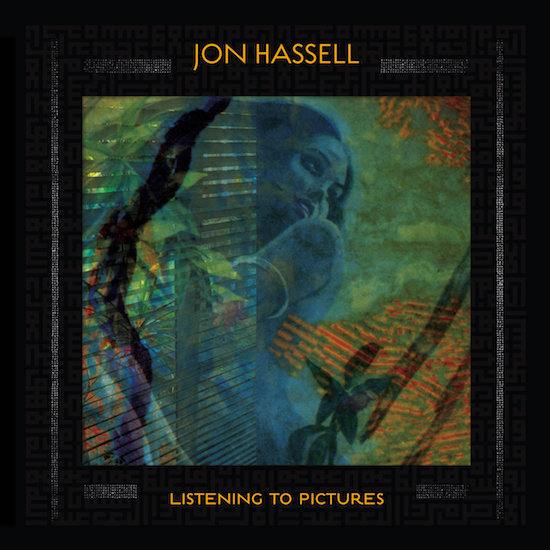One of the surprising things about the revival of Fourth World, Jon Hassell’s schema for a music unshackled by boundaries of place and tradition, is how relaxed most have been about its cultural politics. The idea emerged in a pair of acclaimed early albums – 1980’s Possible Musics and 1981’s Dream Theory in Malaya – but the name also pointed to a broader agenda. As described by Hassell, Fourth World involved “the merging of the traditional and spiritual side from the Third World with the First World technology”. This might have been uncontroversial in the globalist 1980s. But in an age marked by the imperative to decolonise, it feels oddly parochial. Perhaps the idea has been vague enough to deflect scrutiny, but it’s undeniable that those crafting the post-geography of Fourth World have mostly been white men.
The problem is with the concept itself, which, as this new record reminds us, sells Hassell’s extraordinary music short. Listening to Pictures is his first for nine years, and the debut for a new label, Ndeya, dedicated to archival releases and re-presses of his own music. The record marinates in a noirish collage, splicing modal jazz, musique concrète, rapid-fire beatwork and even, on ‘Pastorale Vassant’, a chorus of goats’ bells recorded in Mallorca. Hassell’s trumpet is the shapeshifting protagonist. In opener ‘Dreaming’, it ascends through a foggy cycle of chords in trademark layered form, each line floating in parallel like softly raked sand. On ‘Ndeya’ it duets feverishly with Kheir-Eddine M’Kachiche’s violin. The same layering technique returns on ‘Slipstream’ with more than a nod to Miles Davis, echoing the anxious melancholy of his classic work with Gil Evans. Another, perhaps less obvious affinity is with the compositions of David Behrman – see the gauzy stillness of 1987’s Leapday Night.
While much of this is familiar territory, there’s a slickness to the production that moves us slightly away from earlier records. On ‘Picnic’, Ralph Cumbers (Bass Clef) is enlisted to deliver a rhythmic shimmer of glitches and breaks. ‘Manga Scene’ knits its elements more chaotically, but keeps the edges soft and contained. By contrast, Hassell’s earlier albums seduce partly through their caustic joins. 1990’s City: Works Of Fiction, for instance, drew on Hank Shocklee’s Public Enemy productions to generate what David Toop called a “[soundtrack] for the city twitching in delirium tremens”.
That sense of productive dissonance feels more muted here, but is perhaps in keeping with Hassell’s designs. In a written statement accompanying the album, he distances himself from the question of “what comes next” in favour of "what’s happening now – letting your inner ears scan up and down the sonic spectrum”. While I can’t help missing the volatile momentum of previous records, Listening to Pictures still animates its sonic space with the kind of detail few musicians have the vision or audacity to achieve.


